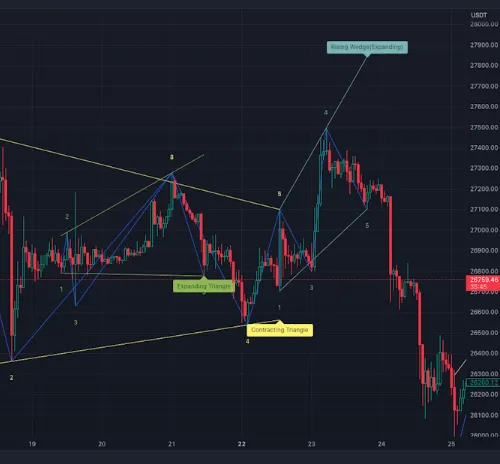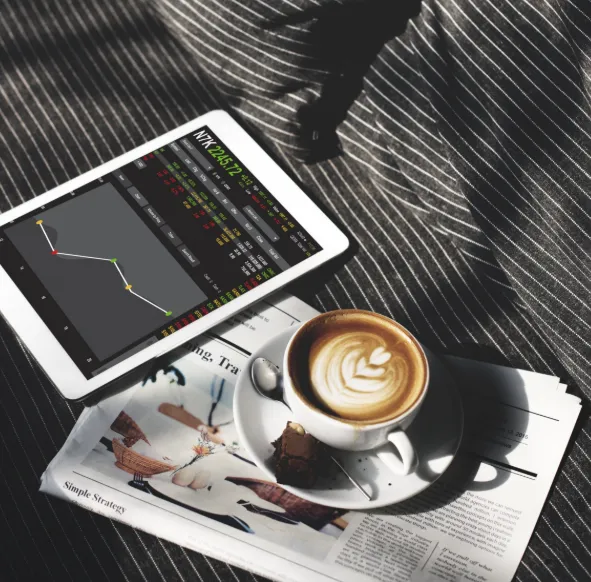Technical analysis is a fundamental skill for anyone looking to succeed in the world of stock trading. By understanding stock chart patterns, technical indicators, and market trends, investors can better predict price movements and make more informed decisions.
In this guide, we’ll break down various types of chart patterns, explain the importance of support and resistance levels, and dive into key technical indicators that can help shape your trading strategy.
What Are Chart Patterns?
Chart patterns are visual tools that represent the price movements of an asset over time. These patterns form as a result of the interactions between buyers and sellers in the market and can offer insights into the potential future direction of an asset’s price.
Chart patterns can be classified into two main categories: continuation patterns and reversal patterns. Continuation patterns suggest that the current trend will continue, while reversal patterns indicate a potential change in the trend’s direction.
Common Stock Chart Patterns
- Head and Shoulders (Reversal Pattern)
The head and shoulders pattern is one of the most reliable reversal patterns. It consists of a large peak (the head) between two smaller peaks (the shoulders). This pattern signals a trend reversal, with the price expected to drop after breaking below the neckline (the line connecting the two troughs). The inverse head and shoulders pattern suggests a reversal of a downward trend into an uptrend. - Cup and Handle (Continuation Pattern)
This pattern resembles a teacup, with a rounded bottom (the cup) and a slight pullback (the handle). Typically forming during an uptrend, it signals that the price will continue to rise after a breakout above the handle. The volume should increase as the price breaks through the handle, confirming the pattern. - Triangles (Continuation/Reversal Pattern)
There are three types of triangle patterns: symmetrical, ascending, and descending.
- Symmetrical triangles indicate a period of consolidation before a breakout.
- Ascending triangles are bullish, as they show increasing demand with horizontal resistance and an upward-sloping support line.
- Descending triangles are bearish, indicating increasing supply with a horizontal support and downward-sloping resistance.
In each case, the breakout direction typically follows the trend leading up to the pattern.
- Double Tops and Bottoms (Reversal Pattern)
Double tops occur when the price reaches a peak twice but fails to break through, signaling a bearish reversal. Double bottoms, on the other hand, form when the price hits a low twice and reverses upwards, indicating a bullish trend. Confirmation occurs when the price breaks below the support (for a double top) or above the resistance (for a double bottom). - Flags and Pennants (Continuation Patterns)
These short-term patterns follow strong price moves. Flags appear as small parallelograms that slope against the prevailing trend, while pennants are small symmetrical triangles. Both patterns suggest that the trend will continue after a brief consolidation period. - Wedges (Continuation/Reversal Pattern)
Wedges have converging trendlines that move in the same direction. Rising wedges, formed in uptrends, indicate potential reversals downward, while falling wedges, formed during downtrends, signal potential upward breakouts. - Triple Tops and Bottoms (Reversal Pattern)
Triple tops and bottoms are stronger versions of double tops and bottoms, where the price forms three peaks or troughs. A breakout below the support (triple top) or above the resistance (triple bottom) confirms the trend reversal. - Channel (Continuation Pattern)
Channels are formed when prices move between two parallel trendlines. An ascending channel is bullish, while a descending channel is bearish. Traders can buy near the lower boundary (support) and sell near the upper boundary (resistance) until a breakout occurs.
How to Interpret Chart Patterns
Interpreting chart patterns effectively requires a combination of technical analysis and market understanding. Here are some key tips:
- Look for Confirmation: Before making a trade based on a pattern, look for confirmation signals such as volume surges or moving average crossovers.
- Understand the Context: Chart patterns should be interpreted within the broader market trend. A pattern that’s bullish in a strong bull market might not hold true in a bearish environment.
- Use Multiple Timeframes: Analyzing patterns on different timeframes can help you better understand the broader trend and avoid false signals.
- Practice: Regularly reviewing and analyzing past chart patterns will help you hone your skills and recognize patterns more easily over time.
Understanding Market Trends and Momentum
What Are Market Trends?
A market trend is the general direction in which asset prices are moving. Identifying trends is critical for making informed decisions in trading. There are three main types of market trends:
- Uptrend (Bullish): In an uptrend, prices are rising due to strong demand. Investors typically buy assets, anticipating further price increases.
- Downtrend (Bearish): In a downtrend, prices are falling because the supply of assets exceeds demand. Traders may short-sell or sell their positions in anticipation of further declines.
- Sideways Trend (Neutral): A sideways trend indicates little movement in either direction, often resulting in a consolidation phase where traders wait for a breakout.
Recognizing these trends helps traders align their strategies with the prevailing market direction, which increases their chances of profitable trades.
What Is Momentum Trading?
Momentum trading focuses on assets showing strong price movements, either upward or downward. The idea is to capitalize on these trends by entering the market early and riding the wave of momentum until the trend begins to weaken.
Momentum traders use indicators such as the Relative Strength Index (RSI), Moving Average Convergence Divergence (MACD), and Average Directional Index (ADX) to identify the strength of a trend and the best entry and exit points.
Key Technical Indicators
- Moving Averages
Moving averages smooth out price data, helping traders identify trends. The Simple Moving Average (SMA) calculates the average price over a specific period, while the Exponential Moving Average (EMA) gives more weight to recent prices, making it more responsive to market changes. - Relative Strength Index (RSI)
RSI is a momentum oscillator that helps identify overbought or oversold conditions. An RSI above 70 suggests an asset is overbought, while an RSI below 30 indicates it’s oversold. Divergences between the RSI and price often signal a trend reversal. - MACD
MACD is a trend-following momentum indicator that shows the relationship between two moving averages of a stock’s price. The crossover of the MACD line and signal line provides buy and sell signals. - Bollinger Bands
Bollinger Bands measure market volatility. Prices that touch the upper or lower band indicate overbought or oversold conditions, respectively. - Fibonacci Retracement
Fibonacci retracement helps identify potential support and resistance levels based on the key Fibonacci ratios. These levels are widely used to predict future price movements and potential reversal points. - Average True Range (ATR)
ATR measures market volatility, helping traders set stop-loss levels. A high ATR indicates a volatile market, which can affect risk management strategies. - Stochastic Oscillator
The stochastic oscillator compares a stock’s closing price to its price range over a given period. Readings above 80 suggest overbought conditions, while readings below 20 indicate oversold conditions.
Combining Technical Indicators for Better Accuracy
While each indicator provides useful insights, combining multiple indicators can enhance accuracy and reduce the risk of false signals. For example, using moving averages to determine the trend direction and RSI to pinpoint entry points can offer a more reliable trading strategy.
Conclusion
Mastering technical analysis is essential for making informed trading decisions. By understanding chart patterns, technical indicators, and market trends, traders can better predict price movements and capitalize on trading opportunities. Remember to combine your analysis with discipline and a clear trading strategy to maximize your success in the markets. Keep learning, practicing, and refining your skills, and you’ll be well on your way to becoming a successful trader.













